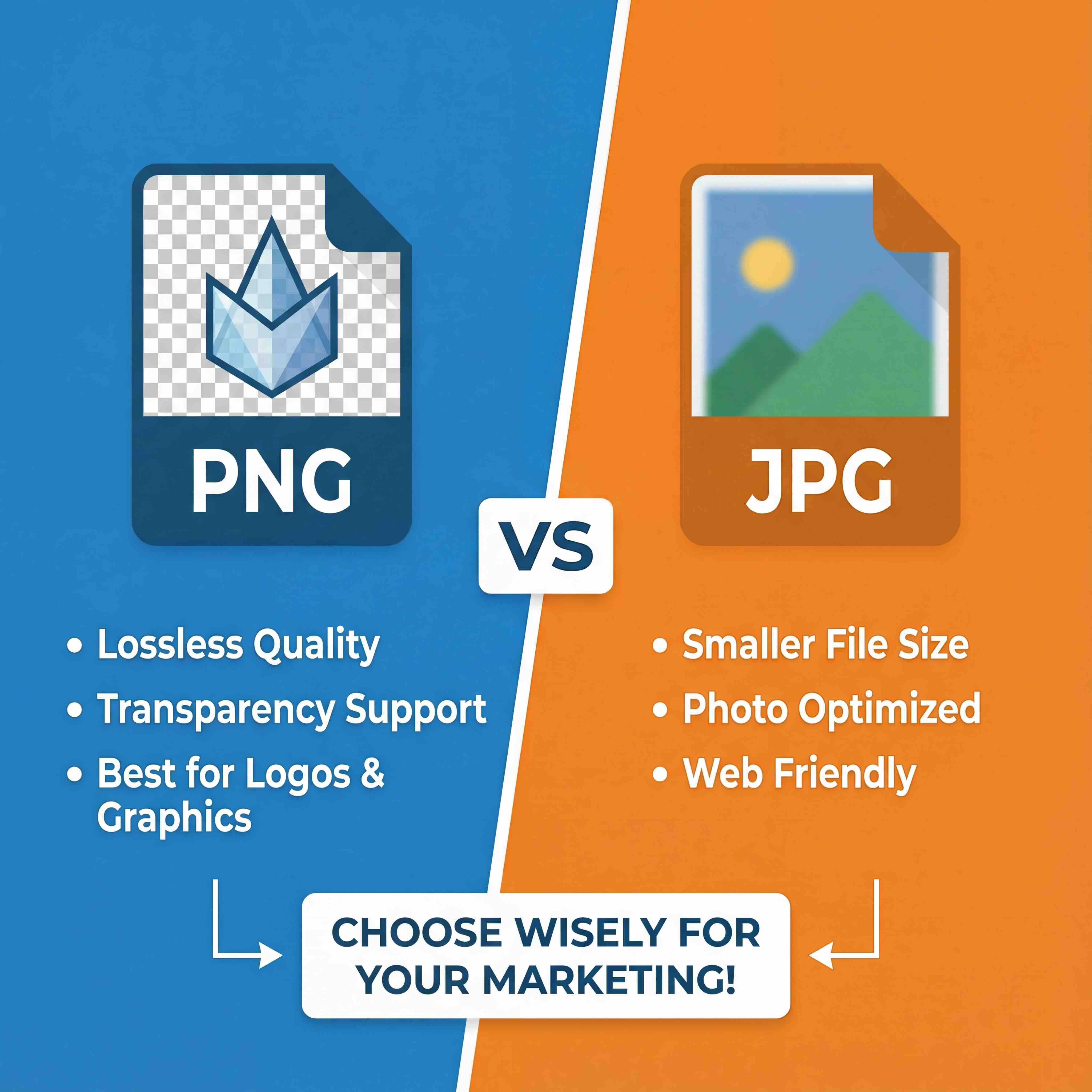Creative teams in architecture, product design, and marketing face immense pressure to produce high-quality visual assets faster than ever. The challenge extends beyond rapid generation to managing a complex ecosystem of tools, assets, and stakeholder feedback in a secure and compliant manner. This is where a unified platform becomes essential for modern enterprise workflows.
By centralizing AI-powered 3D model generation, asset management, and collaboration, teams gain access to a responsible and secure environment built for enterprise needs. This article explores seven detailed use cases and scenarios to demonstrate how professionals can leverage an integrated workspace. Our focus is to streamline workflows, enhance creative collaboration, and accelerate project delivery while upholding the highest standards of safety and compliance.
We will move beyond theory to provide a strategic breakdown for each scenario. You'll find actionable insights and replicable methods that your team can implement immediately. The goal is to illustrate how integrating these processes not only boosts efficiency but also secures the creative pipeline from concept to final creation, providing a reliable framework for demanding enterprise projects. This guide offers a clear look at practical applications, helping you understand how to harness these powerful capabilities for your own initiatives.
1. Accelerating Pre-Visualization for Game Development
In game development, the pre-visualization (pre-viz) phase is a critical bottleneck. This early stage, where teams define a game's visual identity, traditionally involves slow, manual 3D modeling. This process often delays creative exploration and decision-making. However, integrating AI-powered generation tools within a secure platform like Virtuall can dramatically compress this timeline from weeks to mere hours, transforming a studio's creative workflow responsibly.
This scenario showcases how a mid-sized gaming studio leverages Virtuall to overcome pre-viz hurdles. Instead of waiting for artists to model every asset from scratch, the team uses AI to generate dozens of character concepts, environmental props, and basic level layouts rapidly. This method provides a wealth of visual information upfront, enabling faster iteration and alignment between art directors, designers, and producers within a controlled environment.
Strategic Breakdown
By shifting from manual creation to AI-assisted generation for pre-viz, the studio unlocked significant strategic advantages. They could test more concepts in less time, reducing the risk of committing resources to a flawed creative direction, all while ensuring asset governance.
Key Strategy: The studio adopted a "fail-fast" creative model. By using Virtuall to generate a high volume of low-fidelity assets, they could quickly identify which visual themes resonated and which did not, without investing significant artist-hours.
This approach not only saved time but also fostered a more experimental and collaborative environment, grounded in security and compliance.
Actionable Takeaways
Studios can replicate this success by integrating AI-powered pre-viz into their pipeline. This is a prime example of effective use cases and scenarios where technology augments creative output within a safe enterprise framework.
- Implement AI for Ideation: Use text-to-3D prompts within Virtuall to generate a wide array of initial concepts for characters, weapons, and props. For example, prompt "low-poly sci-fi crate with bioluminescent panels" to get dozens of variations instantly.
- Establish a Centralized Asset Hub: Ensure all generated assets are managed within Virtuall’s secure workspace. This creates a single source of truth, with version control and feedback loops that align with enterprise compliance standards.
- Focus Artists on Refinement: Free up your skilled 3D artists from repetitive pre-viz tasks. Their time is better spent refining the AI-generated models that the team has approved, adding detailed textures, and optimizing them for the game engine.
2. Enhancing Medical Training and Patient Education
The rise of virtual health has transformed healthcare delivery, but it has also created new challenges, particularly in medical training and patient communication. Complex procedures and anatomical concepts are difficult to explain over a video call. This is where integrating AI-powered 3D visualization tools like Virtuall can bridge the gap, allowing healthcare professionals to create and share detailed anatomical models for more effective virtual consultations and training simulations in a compliant manner.
This scenario illustrates how a major healthcare provider uses Virtuall to improve remote patient education and surgical training. Instead of relying on static 2D diagrams, specialists generate interactive 3D models of a patient’s specific condition. This visual aid helps patients understand their diagnosis and treatment plan, improving adherence and outcomes while maintaining the highest standards of data security and HIPAA compliance.

Strategic Breakdown
By incorporating AI-generated 3D models into their telemedicine platform, the provider transformed abstract medical discussions into tangible, interactive experiences. This shift significantly improved patient comprehension and empowered trainees with a deeper understanding of complex surgical procedures, all within a secure, compliant digital environment.
Key Strategy: The provider adopted a "visual-first" communication model. Using Virtuall to generate medically accurate 3D assets on-demand, they ensured that both patients and trainees could see, rotate, and understand complex biological structures, rather than just hearing about them.
This strategy not only demystified complex health information but also reinforced the provider's commitment to innovative, responsible patient-centric care.
Actionable Takeaways
Healthcare organizations can replicate this success by leveraging AI for visual communication. This is one of the most impactful use cases and scenarios for improving virtual healthcare delivery responsibly.
- Generate Models for Patient Consultations: Use text prompts in Virtuall to create 3D anatomical models during live telemedicine calls. For example, a cardiologist could prompt "3D model of a human heart showing aortic stenosis" to visually explain the condition to a patient.
- Develop Immersive Surgical Training: Create detailed, interactive simulations for medical residents. These virtual reality environments, built with Virtuall assets, offer a safe space to practice complex procedures. You can learn how to create VR content on virtull.pro to enhance these training modules.
- Ensure Enterprise-Grade Compliance: Manage all sensitive 3D medical assets within Virtuall's secure, HIPAA-compliant workspace. This guarantees that patient data is protected while enabling seamless collaboration between medical teams.
3. Streamlining Architectural Visualization for Product Marketing
Architectural visualization (ArchViz) for consumer products presents a unique challenge. Marketing teams need to create photorealistic renders of products like furniture, electronics, and decor within diverse home environments. This traditionally requires extensive 3D modeling and rendering time for each unique setting, slowing down campaign launches. By using AI-powered generation tools like Virtuall, companies can rapidly prototype and visualize these products in countless scenarios within a secure, brand-compliant workflow.
This scenario focuses on a leading home goods company preparing for a new product launch. Instead of manually modeling every potential living room, kitchen, and bedroom, the marketing team uses Virtuall to generate a vast library of architectural interiors. They can then place their high-fidelity product models into these AI-generated scenes, creating compelling marketing imagery in a fraction of the time and cost. This is one of the most effective use cases and scenarios for rapid, yet controlled, visual asset creation.

Strategic Breakdown
By leveraging AI for environmental set dressing, the company could decouple product visualization from the constraints of physical photoshoots or slow manual 3D environment creation. This allowed them to produce a higher volume of targeted marketing assets while maintaining strict brand consistency and security over their product models.
Key Strategy: The company implemented a "context-as-a-service" model for its marketing visuals. Using Virtuall to generate endless scene variations allowed them to showcase their products in a wide range of architectural styles, from minimalist urban lofts to cozy suburban homes, without incurring proportional production costs.
This approach not only accelerated their content pipeline but also improved the relevance and appeal of their marketing campaigns within a secure framework.
Actionable Takeaways
Marketing and design teams can adopt this strategy to enhance their product visualization workflows, ensuring speed, creative flexibility, and enterprise-grade security.
- Generate Diverse Environments: Use simple text prompts in Virtuall like "modern Scandinavian kitchen with marble countertops at sunrise" to generate dozens of unique backdrops for your products.
- Create a Centralized Prop Library: Manage all AI-generated architectural assets and product models within Virtuall's secure, compliant workspace. This ensures brand consistency and provides a single source of truth for the entire marketing team.
- Empower Marketers, Focus Designers: Allow marketing specialists to create their own scene mockups using AI, freeing up skilled 3D artists to focus on perfecting the final hero shots, lighting, and high-fidelity product renders.
4. Securing Creative Assets with Advanced IP Protection
In creative industries, protecting intellectual property and digital assets is as crucial as financial security. Unauthorized access, use, and asset theft can lead to significant revenue loss and brand damage. Traditional security measures often fail to keep pace with sophisticated threats, creating vulnerabilities in creative pipelines. By integrating advanced, behavior-based security, creative firms can safeguard their valuable 3D models, proprietary designs, and project data.
This scenario illustrates how a major creative agency uses Virtuall’s built-in security features, which are analogous to advanced financial fraud detection systems, to protect its asset library. The platform analyzes user behavior, access patterns, and download requests in real-time. It flags anomalies, such as an unusual number of downloads from an unrecognized IP address or access attempts outside normal working hours, preventing potential breaches before they cause damage.
Strategic Breakdown
By adopting a proactive security posture, the agency transformed asset management from a reactive, damage-control function into a preventative, trust-building one. This approach ensures that all creative work remains secure, maintaining client confidence and enterprise compliance.
Key Strategy: The agency implemented a layered, behavior-based security model. Virtuall's system learns the typical workflow patterns of authorized users, allowing it to instantly identify and flag deviations that suggest unauthorized activity or a compromised account.
This intelligent monitoring minimizes friction for legitimate users while creating a formidable barrier against unauthorized access and asset theft.
Actionable Takeaways
Creative firms can leverage similar strategies to protect their digital IP, demonstrating how security-focused use cases and scenarios are critical for enterprise readiness and responsible operations.
- Establish Behavioral Baselines: Utilize Virtuall to monitor and learn normal user activity, such as typical project access times and data transfer volumes. This creates a baseline to detect suspicious deviations.
- Implement Layered Access Controls: Combine role-based permissions with real-time anomaly detection. For instance, restrict access to high-value final renders and require multi-factor authentication for any downloads outside the corporate network.
- Create Clear Escalation Protocols: Define an automated response plan for flagged activities. A low-risk anomaly might trigger an email alert, while a high-risk event, like a mass download attempt, could automatically suspend the account and notify a security administrator.
5. Optimizing Industrial Design with Digital Twins for Predictive Maintenance
In industrial design and manufacturing, creating assets for digital twins is a crucial yet labor-intensive process. A digital twin is a virtual replica of a physical asset, used for monitoring and predictive maintenance. Traditionally, building these detailed 3D models required extensive manual work, creating a bottleneck for companies digitizing their operations. AI-powered tools like Virtuall now allow industrial design firms to generate these complex models rapidly and securely, accelerating the deployment of these advanced monitoring systems.
This scenario illustrates how a large-scale manufacturing firm uses Virtuall to create digital twins of its assembly line equipment. Instead of having designers model each component from scratch, the team uses text prompts and existing schematics to generate accurate 3D representations within a secure platform. These models are then integrated with IoT sensor data, enabling the firm to predict equipment failures, optimize maintenance schedules, and prevent costly downtime while ensuring data integrity.
Strategic Breakdown
By leveraging AI for digital twin creation, the firm shifted its focus from painstaking manual modeling to high-value data analysis and system optimization. This accelerated their digital transformation, allowing them to benefit from predictive maintenance insights much faster than competitors who relied on traditional 3D modeling pipelines.
Key Strategy: The firm adopted an "asset-first" digital twin strategy. By using Virtuall to quickly generate a comprehensive library of their physical equipment, they created a scalable and secure foundation for their predictive maintenance platform, ensuring that as new machinery was added, its digital counterpart could be created almost instantly.
This proactive approach not only reduced production interruptions but also improved overall operational efficiency and workplace safety.
Actionable Takeaways
Industrial design and manufacturing firms can replicate this success by integrating AI into their digital twin workflow. This is one of the most effective use cases and scenarios for applying generative AI to complex industrial challenges in a responsible, secure manner.
- Generate from Schematics: Use Virtuall to translate 2D CAD drawings or technical schematics into fully realized 3D models. A prompt like "create a high-fidelity 3D model of a KUKA KR 210 robotic arm based on these engineering diagrams" can generate the initial asset for refinement.
- Establish a Secure Digital Asset Library: Manage all digital twin models within Virtuall's enterprise-grade platform. This ensures that all assets are version-controlled and access is managed securely, meeting strict industrial compliance and data governance standards.
- Empower Maintenance Teams with Visuals: Use the generated 3D models to create interactive training simulations and maintenance guides. This allows technicians to visualize repairs on a virtual model before performing them on the physical equipment, reducing errors and improving safety.
6. Enhancing Architectural Visualization with Interactive Client Previews
In architectural visualization and real estate marketing, client engagement is often limited by static presentations and delayed responses to inquiries. Potential buyers or investors struggle to get immediate, detailed information about a property, slowing down the sales cycle. By implementing interactive features within secure 3D virtual tours, firms can transform passive viewing into an active, engaging, and compliant client experience.
This scenario illustrates how an architectural firm uses Virtuall to build intelligent 3D property showcases. Instead of just sending a static render, they provide clients with a secure link to an interactive model. Clients can ask pre-programmed questions about specifications, navigate to key areas, and toggle material options in real-time. This offers a guided, personalized tour available 24/7 within a controlled environment.
Strategic Breakdown
By shifting from a one-way presentation model to an interactive preview, the firm provides instant gratification for client inquiries and gathers valuable data on which features potential buyers care about most, all while maintaining control over the intellectual property.
Key Strategy: The firm leveraged the interactive 3D model as a data-gathering tool. By analyzing common navigation paths and feature interactions, they identified key selling points and areas of confusion, allowing them to refine their designs and marketing messages.
This strategy not only improved client engagement but also provided actionable insights, demonstrating a clear ROI for adopting this secure, client-facing technology.
Actionable Takeaways
Architectural and real estate firms can replicate this success by turning their 3D models into interactive sales assistants. This is one of the most innovative use cases and scenarios for combining secure controls with 3D visualization.
- Build Interactive Tours: Use Virtuall to create 3D architectural models with interactive hotspots. Program them to display information about materials, square footage, and appliance models, referencing the asset's metadata.
- Provide Foundational Knowledge: To help clients ask better questions, it's useful to understand the basics of project design. Offering resources on the different types of architectural drawings can enrich the client's understanding and interaction.
- Establish a Secure Hand-Off: While the interactive model handles initial exploration, ensure there is a seamless and secure process for users to request a conversation with a human agent. This improves conversion rates while protecting project data.
7. Supply Chain Optimization with Visual Asset Management
In manufacturing and logistics, supply chain optimization is often hindered by a lack of visual clarity. Teams rely on spreadsheets and abstract data to manage physical inventory, making it difficult to visualize packaging configurations and warehouse arrangements. This gap between data and physical reality can lead to costly inefficiencies. Virtuall bridges this divide by enabling teams to generate and manipulate 3D models of products and packaging, creating a visual layer for supply chain data within a secure, collaborative environment.
This scenario illustrates how a global consumer goods company uses Virtuall to optimize its packaging and shipping pipeline. Instead of relying on physical prototypes, their logistics team generates accurate 3D models of new product packaging. These secure digital assets are then used to simulate pallet stacking and test container load efficiency, verifying that all components fit together perfectly before any physical manufacturing begins. This is one of the most effective use cases and scenarios for reducing material waste and shipping costs.
Strategic Breakdown
By integrating 3D visualization into their supply chain management, the company transformed its operational strategy from reactive to proactive. They could identify potential logistical bottlenecks in a secure virtual environment, eliminating expensive real-world trial and error. To master brand asset management, it's important to have a comprehensive guide to brand assets that can inform how these digital twins are organized.
Key Strategy: The company adopted a "digital twin" approach for packaging. Every physical product design had a corresponding 3D model in Virtuall, which served as a single source of truth for logistics, marketing, and manufacturing teams, ensuring enterprise-wide alignment and compliance.
This visual-first methodology de-risked the entire packaging design and deployment process, enhancing collaboration across disparate departments.
Actionable Takeaways
Organizations can replicate this success by bringing 3D visualization into their logistics planning. This strategic shift enhances decision-making and operational efficiency within a compliant framework.
- Generate Packaging Prototypes: Use Virtuall to create 3D models of product boxes and containers. For instance, prompt "standard cardboard shipping box 40x30x20cm with reinforced corners" to quickly generate a base model for simulation.
- Simulate Logistical Scenarios: Arrange the generated 3D assets on virtual pallets to find the most space-efficient configurations. This allows you to optimize load plans and reduce transportation costs before committing to physical stock.
- Create a Centralized Asset Library: Store all packaging and product models in Virtuall’s secure, compliant workspace. This ensures that every team is working with the same approved specifications. For a deeper dive, explore these other supply chain optimization use cases and examples.
Use Case and Scenario Comparison
Unifying Creativity and Compliance in a Single OS
The diverse range of use cases and scenarios explored throughout this article, from architectural visualization to complex supply chain optimization, illuminates a powerful, unifying truth: the future of creative production is not about adopting more fragmented tools. Instead, it is about integrating them into a single, intelligent, and secure ecosystem. The challenges faced by modern creative teams consistently revolve around the need for accelerated workflows, seamless collaboration, and absolute brand integrity, all while navigating a complex landscape of security and compliance requirements.
Virtuall's Creative OS is engineered to solve this exact problem. By moving beyond a piecemeal approach, it transforms the creative process from a disjointed sequence of handoffs into a fluid, transparent, and highly scalable operation. The examples we've analyzed demonstrate a clear pattern: success hinges on the ability to centralize core functions. When AI-powered 3D model generation, robust asset management, and real-time collaboration exist within the same secure environment, teams unlock unprecedented efficiency and creative potential.
From Disparate Tools to a Unified Workflow
The critical takeaway from these scenarios is the strategic advantage of a unified platform built for the enterprise. Consider the common threads:
- Accelerated Iteration: Teams no longer waste valuable time exporting, converting, and re-uploading assets between different software. This allows for rapid prototyping and feedback loops, crucial for staying ahead in fast-paced industries.
- Embedded Security: Centralizing your workflow means security protocols and compliance checks are built-in, not bolted on as an afterthought. This is a non-negotiable for enterprise teams handling sensitive intellectual property.
- A Single Source of Truth: A unified OS eliminates version control nightmares and ensures every stakeholder, from artist to project manager, is working with the most current and approved assets, ensuring compliance.
Mastering this integrated approach is no longer just a competitive edge; it is a fundamental requirement for creative operations at scale. It allows teams to focus their energy on what truly matters: pushing creative boundaries and delivering exceptional results. By embedding safety, compliance, and efficiency into the very fabric of your creative workflow, you de-risk projects and empower your team to turn ambitious visions into tangible reality, faster and more securely than ever before.
Ready to see how these use cases and scenarios apply to your own projects? Discover how Virtuall can centralize your team's 3D asset generation, collaboration, and project management into a single, secure Creative OS. Explore the platform and start building your future workflow today at Virtuall.











